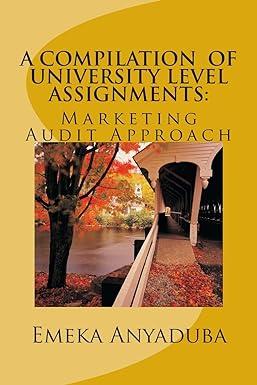Answered step by step
Verified Expert Solution
Question
1 Approved Answer
Budgeting for an Academic Department at a State University: Can You Believe the Numbers? INTRODUCTION You are the senior accounting faculty member in the business
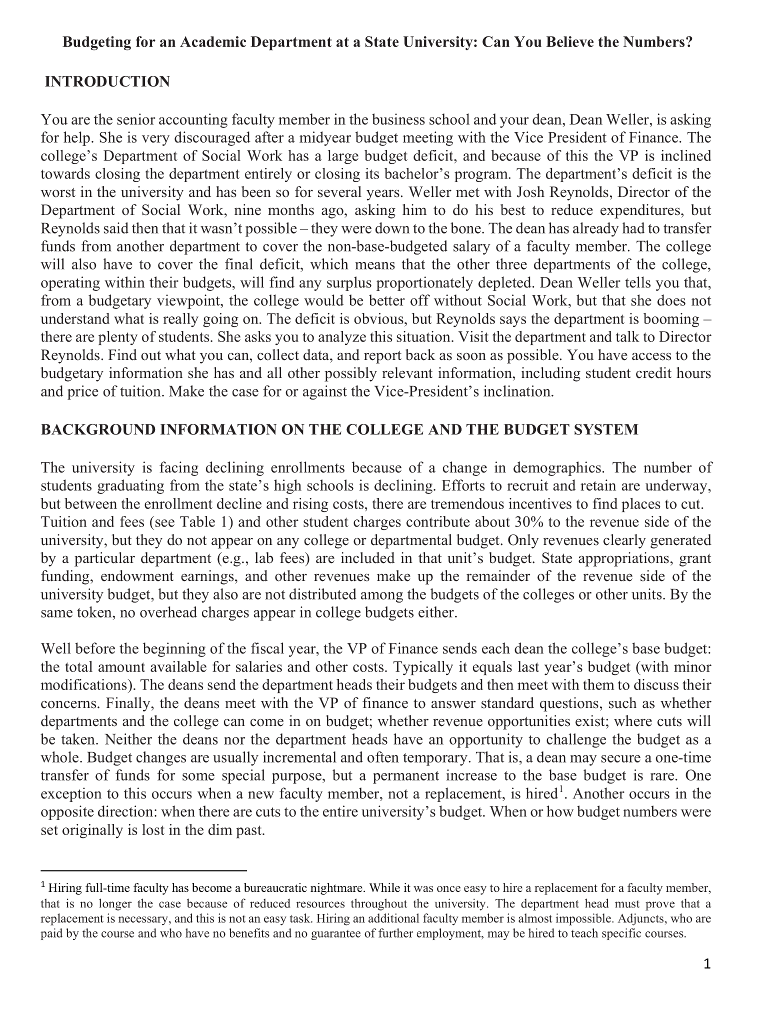
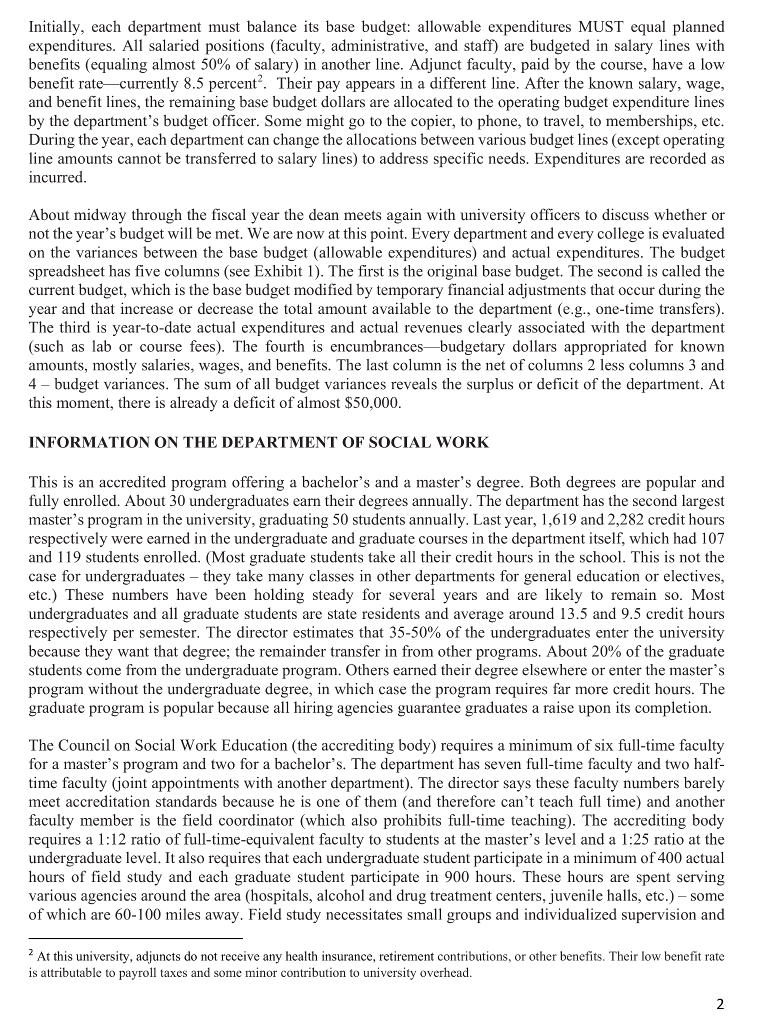
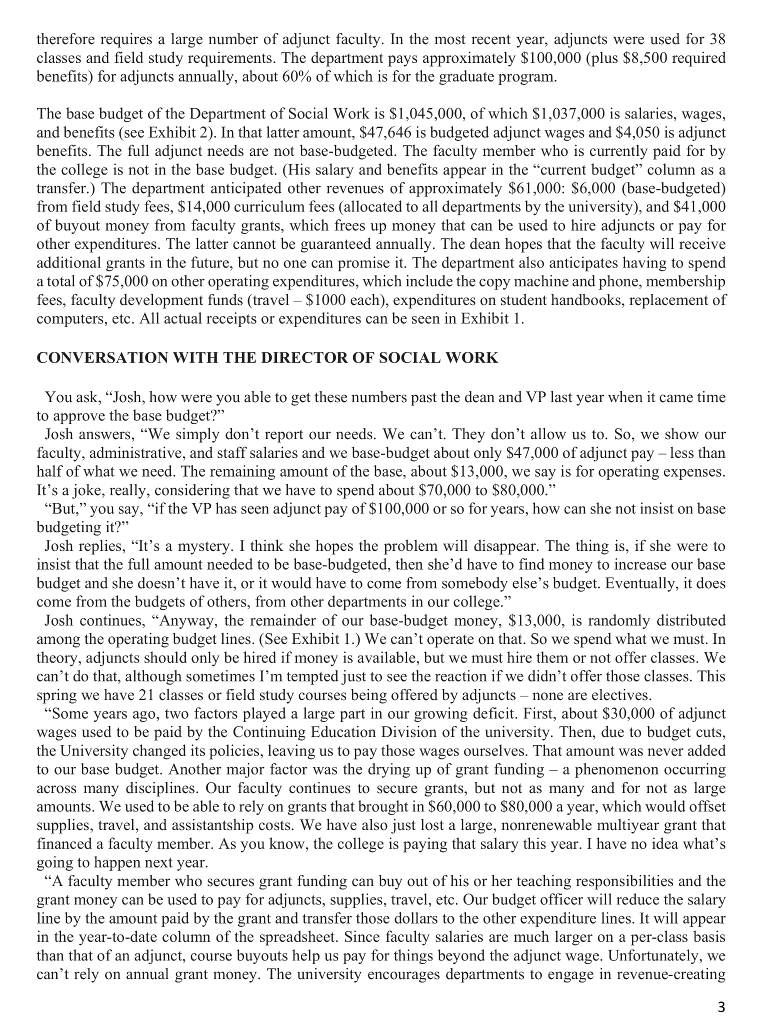
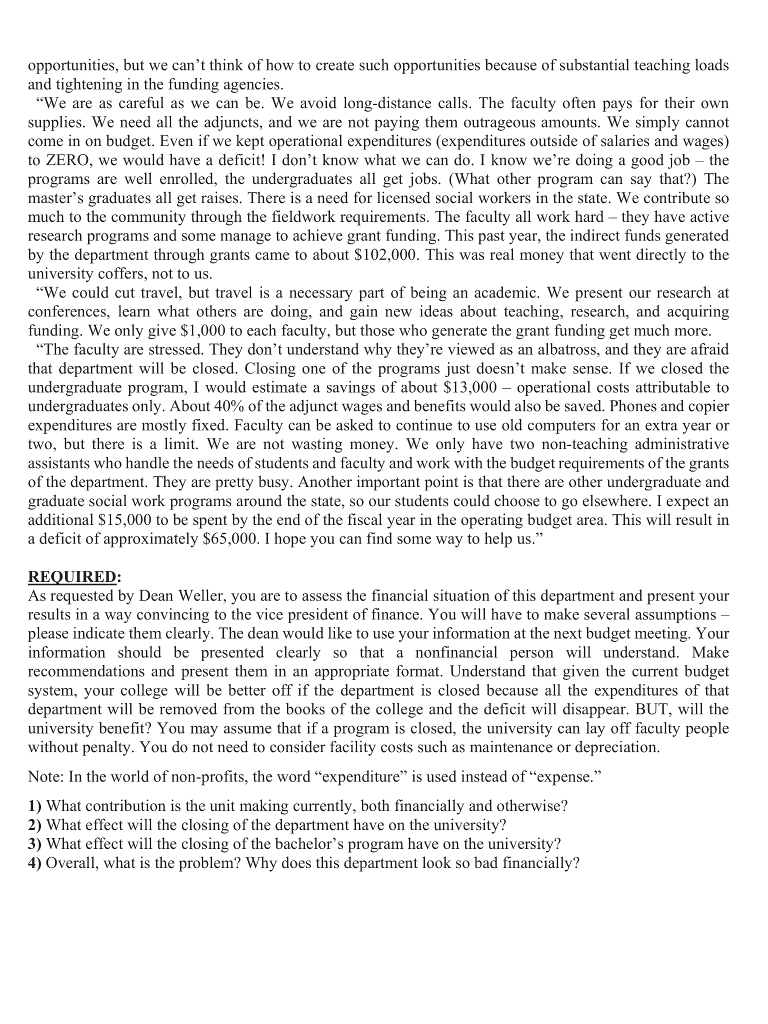
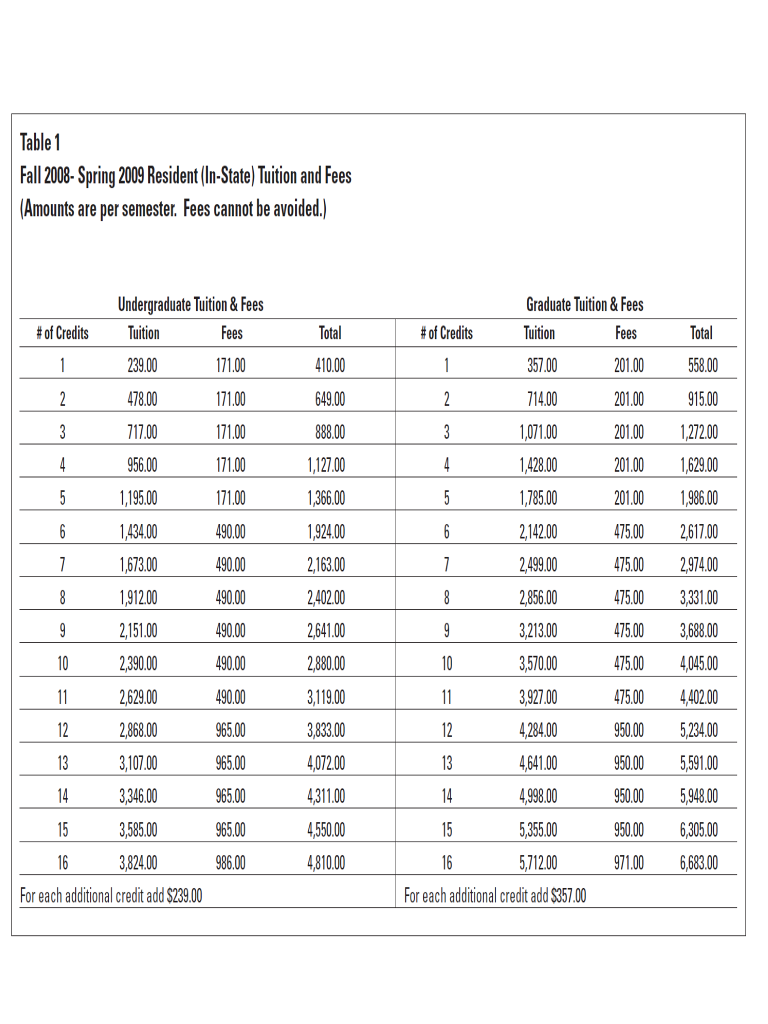
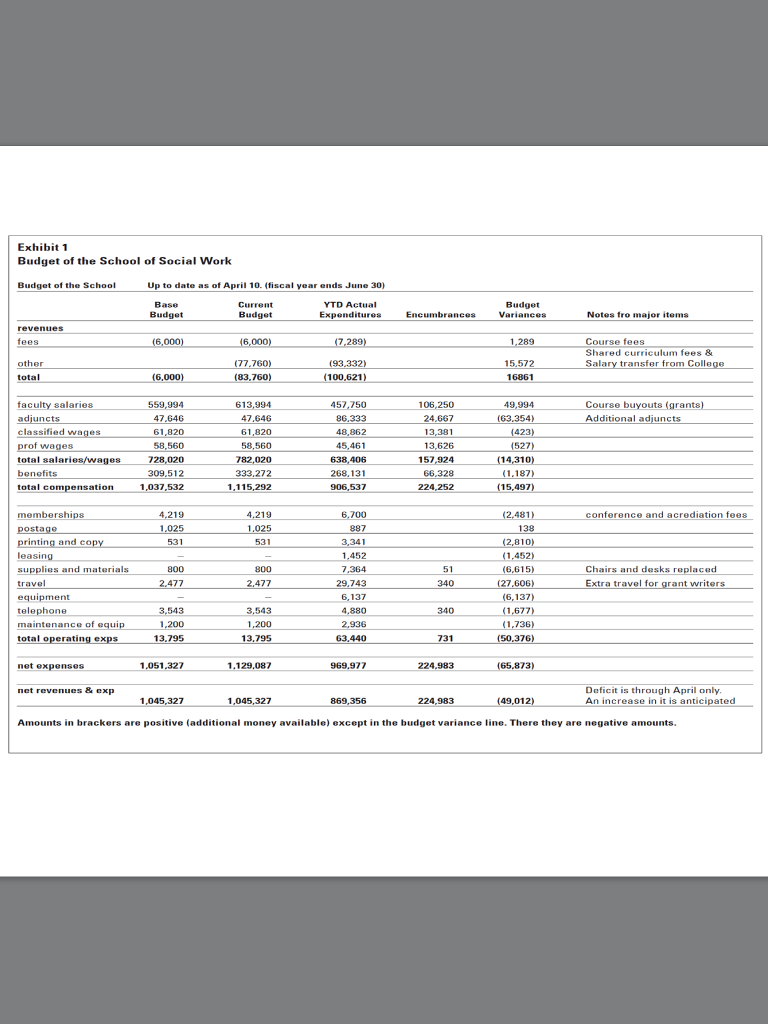

Budgeting for an Academic Department at a State University: Can You Believe the Numbers? INTRODUCTION You are the senior accounting faculty member in the business school and your dean, Dean Weller, is asking for help. She is very discouraged after a midyear budget meeting with the Vice President of Finance. The college's Department of Social Work has a large budget deficit, and because of this the VP is inclined towards closing the department entirely or closing its bachelor's program. The department's deficit is the worst in the university and has been so for several years. Weller met with Josh Reynolds, Director of the Department of Social Work, nine months ago, asking him to do his best to reduce expenditures, but Reynolds said then that it wasn't possible -they were down to the bone. The dean has already had to transfer funds from another department to cover the non-base-budgeted salary of a faculty member. The college will also have to cover the final deficit, which means that the other three departments of the college, operating within their budgets, will find any surplus proportionately depleted. Dean Weller tells you that, from a budgetary viewpoint, the college would be better off without Social Work, but that she does not understand what is really going on. The deficit is obvious, but Reynolds says the department is booming- there are plenty of students. She asks you to analyze this situation. Visit the department and talk to Director Reynolds. Find out what you can, collect data, and report back as soon as possible. You have access to the budgetary information she has and all other possibly relevant information, including student credit hours and price of tuition. Make the case for or against the Vice-President's inclination. BACKGROUND INFORMATION ON THE COLLEGE AND THE BUDGET SYSTEM The university is facing declining enrollments because of a change in demographics. The number of students graduating from the state's high schools is declining. Efforts to recruit and retain are underway, but between the enrollment decline and rising costs, there are tremendous incentives to find places to cut Tuition and fees (see Table 1) and other student charges contribute about 30% to the revenue side of the university, but they do not appear on any college or departmental budget. Only revenues clearly generated by a particular department (e.g., lab fees) are included in that unit's budget. State appropriations, grarnt funding, endowment earnings, and other revenues make up the remainder of the revenue side of the university budget, but they also are not distributed among the budgets of the colleges or other units. By the same token, no overhead charges appear in college budgets either Well before the beginning of the fiscal year, the VP of Finance sends each dean the college's base budget: the total amount available for salaries and other costs. Typically it equals last year's budget (with minor modifications). The deans send the department heads their budgets and then meet with them to discuss their concerns. Finally, the deans meet with the VP of finance to answer standard questions, such as whether departments and the college can come in on budget; whether revenue opportunities exist; where cuts will be taken. Neither the deans nor the department heads have an opportunity to challenge the budget as a whole. Budget changes are usually incremental and often temporary. That is, a dean may secure a one-time transfer of funds for some special purpose, but a permanent increase to the base budget is rare. One exception to this occurs when a new faculty member, not a replacement, is hired'. Another occurs in the opposite direction: when there are cuts to the entire university's budget. When or how budget numbers were set originally is lost in the dim past. Hiring full-time faculty has become a bureaucratic nightmare. While it was once easy to hire a replacement for a faculty member that is no longer the case because of reduced resources throughout the university. The department head must prove that a replacement is necessary, and this is not an easy task. Hiring an additional faculty member is almost impossible. Adjuncts, who are paid by the course and who have no benefits and no guarantee of further employment, may be hired to teach specific courses. Budgeting for an Academic Department at a State University: Can You Believe the Numbers? INTRODUCTION You are the senior accounting faculty member in the business school and your dean, Dean Weller, is asking for help. She is very discouraged after a midyear budget meeting with the Vice President of Finance. The college's Department of Social Work has a large budget deficit, and because of this the VP is inclined towards closing the department entirely or closing its bachelor's program. The department's deficit is the worst in the university and has been so for several years. Weller met with Josh Reynolds, Director of the Department of Social Work, nine months ago, asking him to do his best to reduce expenditures, but Reynolds said then that it wasn't possible -they were down to the bone. The dean has already had to transfer funds from another department to cover the non-base-budgeted salary of a faculty member. The college will also have to cover the final deficit, which means that the other three departments of the college, operating within their budgets, will find any surplus proportionately depleted. Dean Weller tells you that, from a budgetary viewpoint, the college would be better off without Social Work, but that she does not understand what is really going on. The deficit is obvious, but Reynolds says the department is booming- there are plenty of students. She asks you to analyze this situation. Visit the department and talk to Director Reynolds. Find out what you can, collect data, and report back as soon as possible. You have access to the budgetary information she has and all other possibly relevant information, including student credit hours and price of tuition. Make the case for or against the Vice-President's inclination. BACKGROUND INFORMATION ON THE COLLEGE AND THE BUDGET SYSTEM The university is facing declining enrollments because of a change in demographics. The number of students graduating from the state's high schools is declining. Efforts to recruit and retain are underway, but between the enrollment decline and rising costs, there are tremendous incentives to find places to cut Tuition and fees (see Table 1) and other student charges contribute about 30% to the revenue side of the university, but they do not appear on any college or departmental budget. Only revenues clearly generated by a particular department (e.g., lab fees) are included in that unit's budget. State appropriations, grarnt funding, endowment earnings, and other revenues make up the remainder of the revenue side of the university budget, but they also are not distributed among the budgets of the colleges or other units. By the same token, no overhead charges appear in college budgets either Well before the beginning of the fiscal year, the VP of Finance sends each dean the college's base budget: the total amount available for salaries and other costs. Typically it equals last year's budget (with minor modifications). The deans send the department heads their budgets and then meet with them to discuss their concerns. Finally, the deans meet with the VP of finance to answer standard questions, such as whether departments and the college can come in on budget; whether revenue opportunities exist; where cuts will be taken. Neither the deans nor the department heads have an opportunity to challenge the budget as a whole. Budget changes are usually incremental and often temporary. That is, a dean may secure a one-time transfer of funds for some special purpose, but a permanent increase to the base budget is rare. One exception to this occurs when a new faculty member, not a replacement, is hired'. Another occurs in the opposite direction: when there are cuts to the entire university's budget. When or how budget numbers were set originally is lost in the dim past. Hiring full-time faculty has become a bureaucratic nightmare. While it was once easy to hire a replacement for a faculty member that is no longer the case because of reduced resources throughout the university. The department head must prove that a replacement is necessary, and this is not an easy task. Hiring an additional faculty member is almost impossible. Adjuncts, who are paid by the course and who have no benefits and no guarantee of further employment, may be hired to teach specific courses
Step by Step Solution
There are 3 Steps involved in it
Step: 1

Get Instant Access to Expert-Tailored Solutions
See step-by-step solutions with expert insights and AI powered tools for academic success
Step: 2

Step: 3

Ace Your Homework with AI
Get the answers you need in no time with our AI-driven, step-by-step assistance
Get Started


